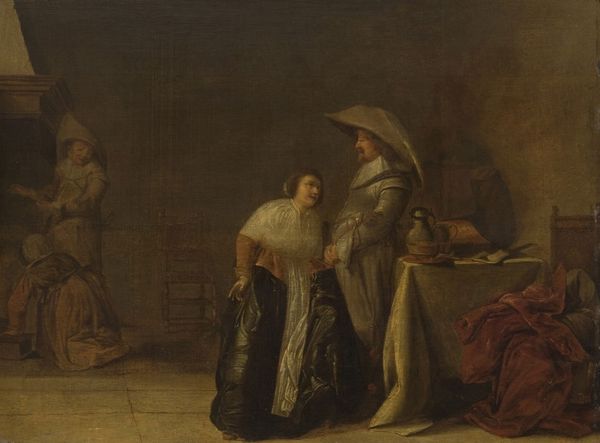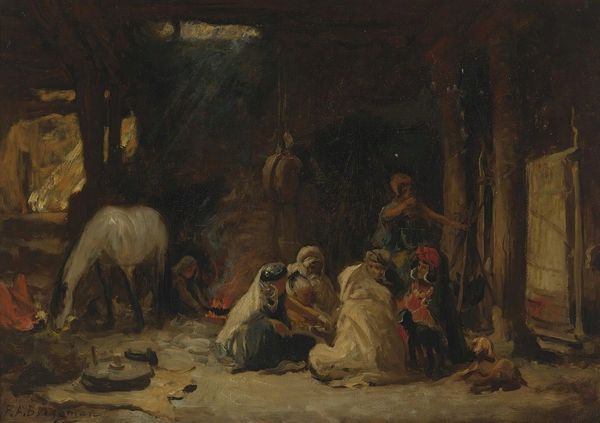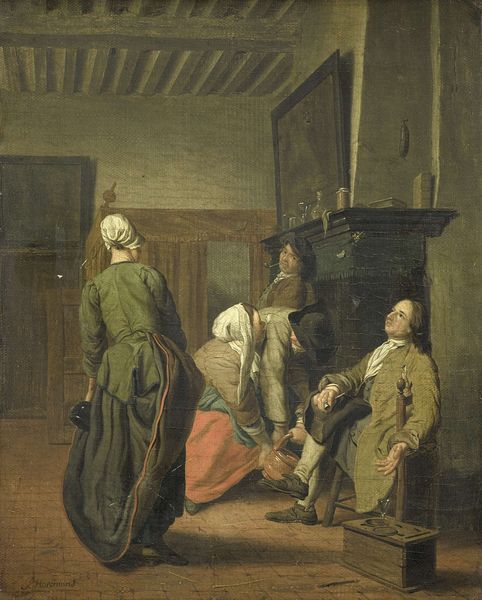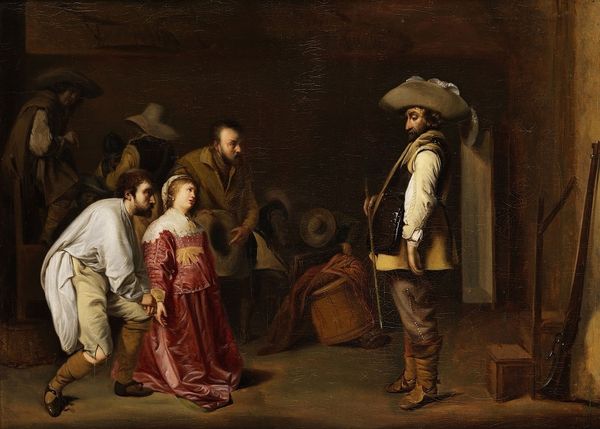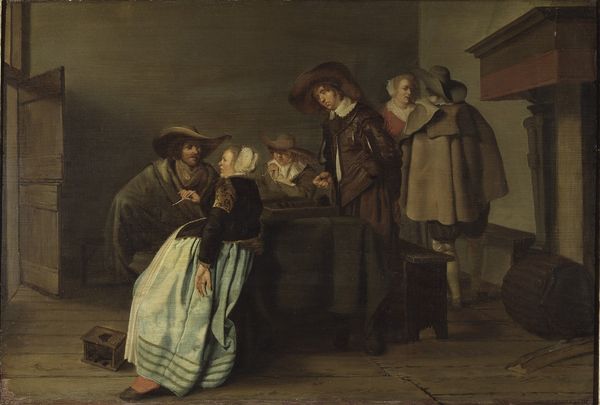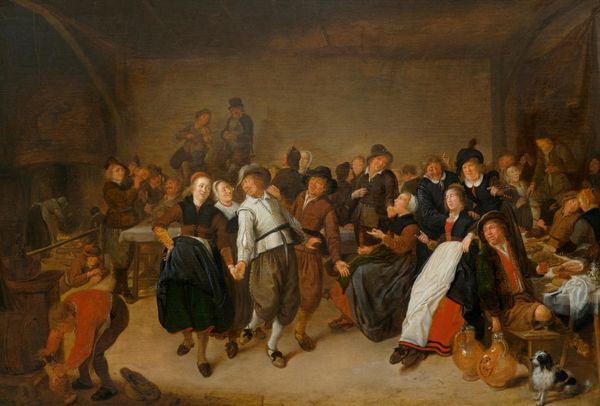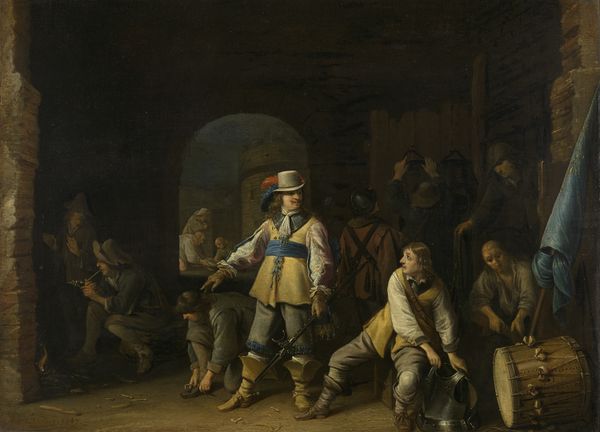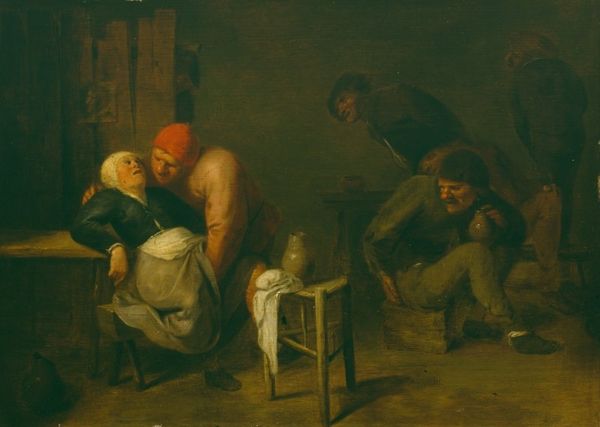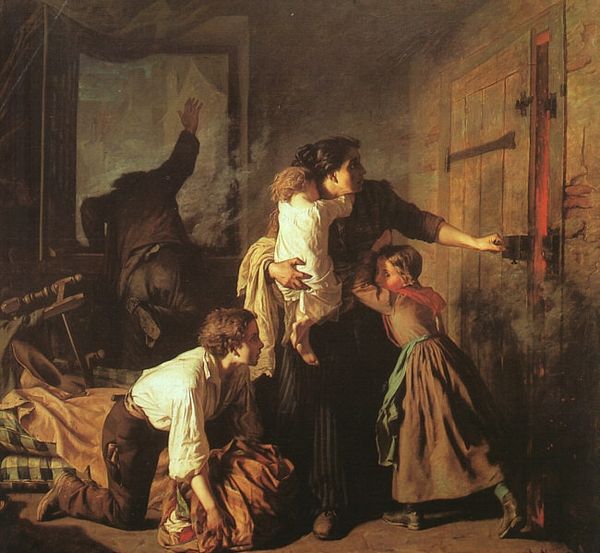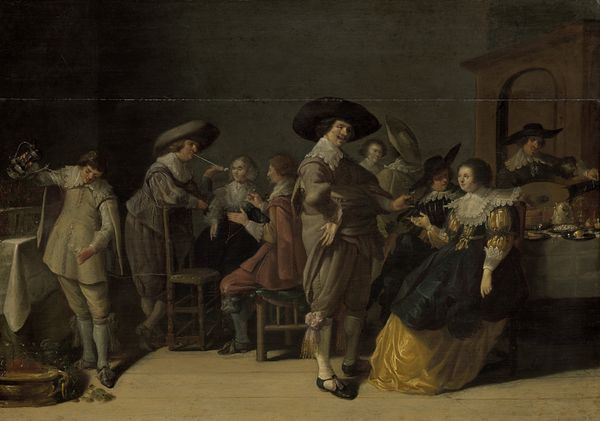
oil-paint
#
narrative-art
#
baroque
#
oil-paint
#
figuration
#
oil painting
#
genre-painting
Copyright: Public domain
Curator: The muted palette here really establishes an air of anxiety. The interior space almost seems to constrict the figures. Editor: I agree. It’s incredibly claustrophobic, visually and psychologically. This painting, titled "Soldiers Taking Plunder," an oil on canvas, appears to be by the Dutch artist Willem Cornelisz Duyster, though its date is unconfirmed. We see soldiers in the midst of looting. It’s genre painting at its most unsettling. Curator: Genre painting allows artists to depict the everyday and through carefully arranged motifs and symbolic elements, offer veiled commentary on morals or society. What strikes me is the light falling across the woman’s face. It’s an echo of Judith and Holofernes. Here we are not asked to sympathize with power, but to see its brutal interruption on the innocent. Editor: Precisely! Consider the historical context: the Dutch Republic was forged through violent revolt against Spanish rule. Duyster, working in Amsterdam, would have been very aware of the ravages of war, the impact of soldiers not just on a national level but personally in peoples' lives. The violation of domestic space is palpable, that red drape adds a feeling of violence to it. The image forces us to confront that reality. Curator: And that soldier's posture – head bowed, carefully scrutinizing the jewelry. This is not glorious battle, this is methodical desecration. He holds her wrist as if to take possession, while the bald woman looks on, a strange expression. What is the symbolic meaning, how are we to relate it to similar paintings showing cruelty and looting? Editor: The soldiers themselves become a visual metaphor for unchecked power and how war is fought on the bodies of civilians, particularly women. Their plundered goods become not just spoils, but markers of human suffering. Curator: Absolutely. By focusing on this intimate scene, Duyster amplifies the universal experience of those who endure the abuses of conflict, inviting us to see reflections of the trauma echoing throughout history and continuing even today. Editor: Duyster confronts us with a perspective we tend to overlook, disrupting narratives that often glorify war, instead making visible the silenced, victimized majority. Thank you for that insight, what a valuable reminder. Curator: And to you as well. The layers of trauma encoded into the deceptively calm surface invite deeper contemplation and that I value deeply in art.
Comments
No comments
Be the first to comment and join the conversation on the ultimate creative platform.

